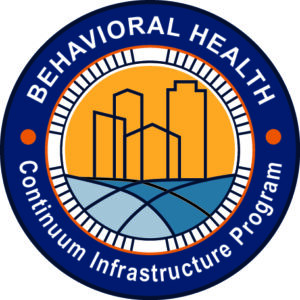Children and Youth
Frequently Asked Questions
Featured Questions and How to Use the FAQ
Questions and answers are grouped by funding opportunity. All responses are labeled either BHCIP, Joint RFA, or Children & Youth. This compilation is updated periodically.
For more information on the CCE program, including FAQs, please visit the program website.
Children and Youth Questions
In order to fully execute a BHCIP Program Funding Agreement (PFA), how do we proceed when the awarded project only pertains to a portion of the existing property/structure in place?
- California Infrastructure Team
- | June 1, 2023
- | FAQ - BHCIP Launch Ready, FAQ - Children and Youth, FAQ - Crisis and Behavioral Health Continuum
BHCIP PFAs require execution of a Declaration of Restrictions (DoR) and Performance Deed of Trust (PDoT) before a sponsor can begin to draw down awarded grant funds. The DoR and PDoT will encumber the entire property where the BHCIP project is located. The following options may be considered by sponsors in instances when the sponsor does not wish to impose certain restrictions on the property as a whole:
A) Non-county entity project sponsor options: (1) Execute the PFA and supporting documents as they are written, encumbering the entire property, and then work with DHCS/AHP to subdivide the property/obtain a lot line adjustment and amend the DoR and DoT once the subdivision/lot line adjustment is complete.
B) County entity project sponsor options: Same options as non-county sponsors with the exception that county entity BHCIP projects may utilize a legal description for the portion of the property to be funded by BHCIP in lieu of a lot line adjustment. This legal description must include a professional land survey map, conducted by a civil engineer who will provide the legal description to be recorded.
For more information on any of the above processes, please contact DHCS/AHP at BHCIP@dhcs.ca.gov.
Is my project required to conform with CEQA guidelines, or is it exempt?
- California Infrastructure Team
- | June 1, 2023
- | FAQ - BHCIP Launch Ready, FAQ - Children and Youth, FAQ - Crisis and Behavioral Health Continuum
Applicants should consult with their legal counsel and applicable local agencies regarding the California Welfare and Institutions Code section 5960.3(a)(b)(c). DHCS is not responsible for determining whether an awardee qualifies for CEQA exemption. As per the program funding agreement (contract), the applicant will be responsible for providing copies of all appropriate building permits and/or notice of CEQA exemption, if applicable.
How will the program funding agreement (PFA), or contract, that will be issued for the BHCIP Round 4: Children and Youth grants compare to the sample Round 3 PFA on the BHCIP website?
- Arold Jacques
- | January 9, 2023
- | FAQ - Children and Youth
While the bulk of this round’s PFA will echo the Round 3: Launch Ready PFA, there are two key differences:
1. Unlike the previous round, Round 4: Children and Youth does not include any federal funding. Therefore, there is no need for federal compliance requirements in the PFA, as there was in Round 3.
2. Round 4 funds are for facilities that provide treatment and service resources in settings that serve Californians ages 25 and younger, including pregnant and postpartum women and their children, and transition-age youth, along with their families. Round 3’s population was broader, since its focus was on funding projects that were deemed “launch ready.”
These differences are reflected broadly throughout the PFA, but also in the Declaration of Restrictions.”
If we are including the costs of property acquisition in our budget, do we need to provide a certified appraisal of the property at this time? Who pays for the certified appraisal?
A certified appraisal of the property is required at the time of the award application if you are using land as the source of your match or if you are acquiring a new property. The certified appraisal must be provided before the grant award is finalized. The cost of the appraisal is the responsibility of the applicant; however, it can be included on the budget as a sunk cost and used as match amount.
When will the BHCIP Round 4: Children and Youth funding awards be announced?
- Arold Jacques
- | September 22, 2022
- | FAQ - Children and Youth
DHCS anticipates BHCIP Round 4: Children and Youth funding award announcements by December 2022. For information and updates, please visit the Round 4: Children and Youth webpage: https://www.infrastructure.buildingcalhhs.com/grantees/cy/.
The RFA requires applicants to provide a “sustainable business plan with (pro forma) projections of future objectives and strategies for achieving them.” Can you please explain what that means?
- Arold Jacques
- | September 22, 2022
- | FAQ - Children and Youth
A sustainable business plan provides an outline of the business approach and structure of how the business will be operated and sustained over time—in this case, for the life of the funding. It is essential that all BHCIP applicants demonstrate that they have a plan for how they will absorb the expanded growth of their operations as proposed in the grant application. Please see these resources for examples:
Please define the term “expansion” as related to BHCIP funding.
- Arold Jacques
- | September 22, 2022
- | FAQ - Children and Youth
BHCIP expansion is considered the addition of new behavioral health service capacity only (beds/slots). Expansion does not include relocation/rebuilding/repurposing existing behavioral health service capacity. BHCIP funding is not preservation funding. Applications that propose to use BHCIP funding to move locations into a new facility, decrease current BH capacity, or support other non-capacity expansion activities will not be considered for funding.
What are the requirements of the 30-year use restriction language specified in the BHCIP Round 4 Request for Applications (RFA)?
- Arold Jacques
- | September 22, 2022
- | FAQ - Children and Youth
Welfare and Institutions Code Section 5960.15(d) specifies that an entity receiving BHCIP grant funds operate services in the financed facility for the intended purposes for a minimum of 30 years. Grantees will be required to execute contracts with DHCS to ensure that the BHCIP-funded facilities continue to be utilized for the intended purposes listed in Section 5960.15(d) for that 30-year period. DHCS intends on building some flexibility in that contract for the grantees to change the intended purpose of their BHCIP-funded facility, if necessary. However, the exact policies and process for a project modification or change in a facility’s use are still under development.
Are the grant funds covering services for the project once the facility is constructed? If so how long is the term once awarded?
- Arold Jacques
- | September 22, 2022
- | FAQ - Children and Youth
Grant funds do not cover services, nor can services be used as a match.

